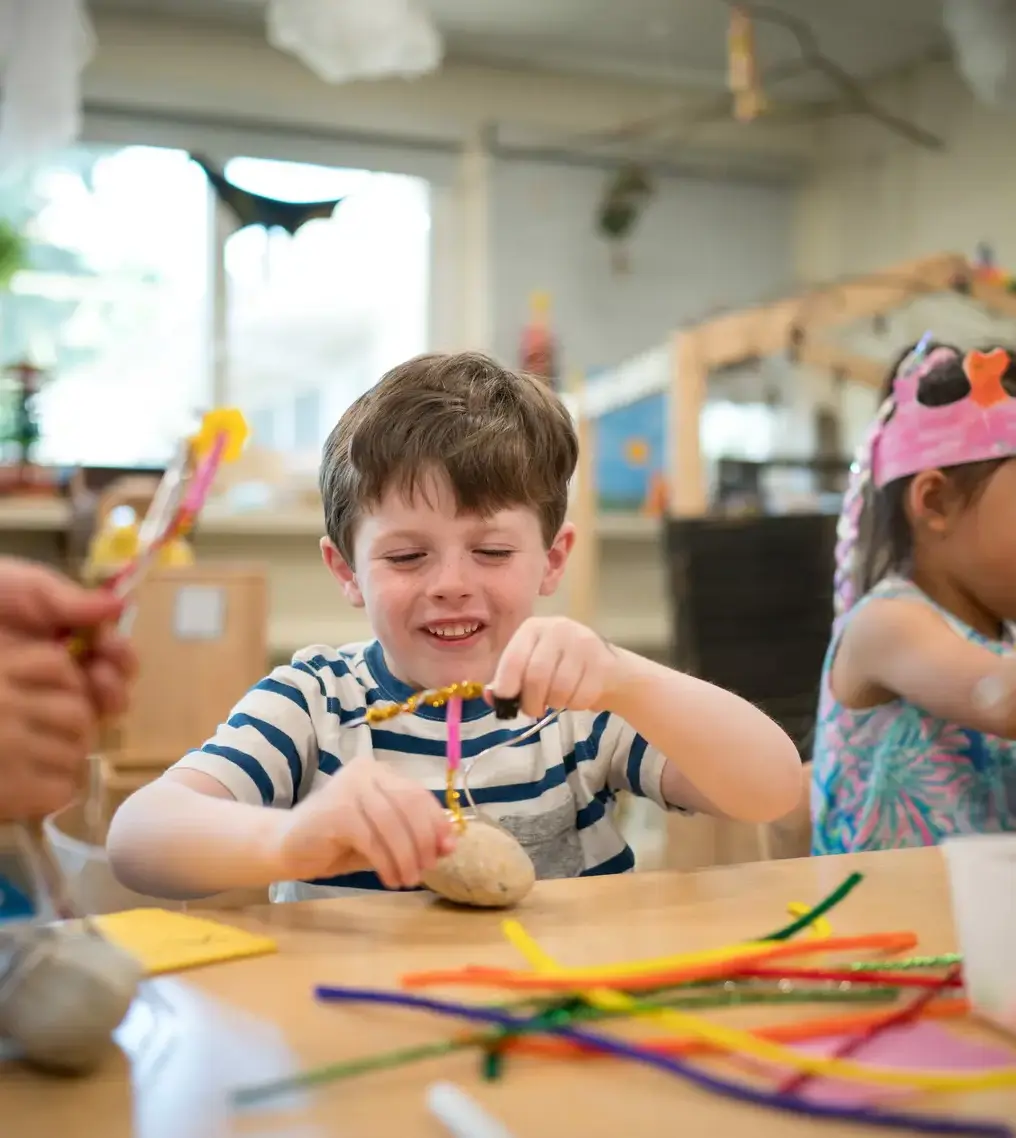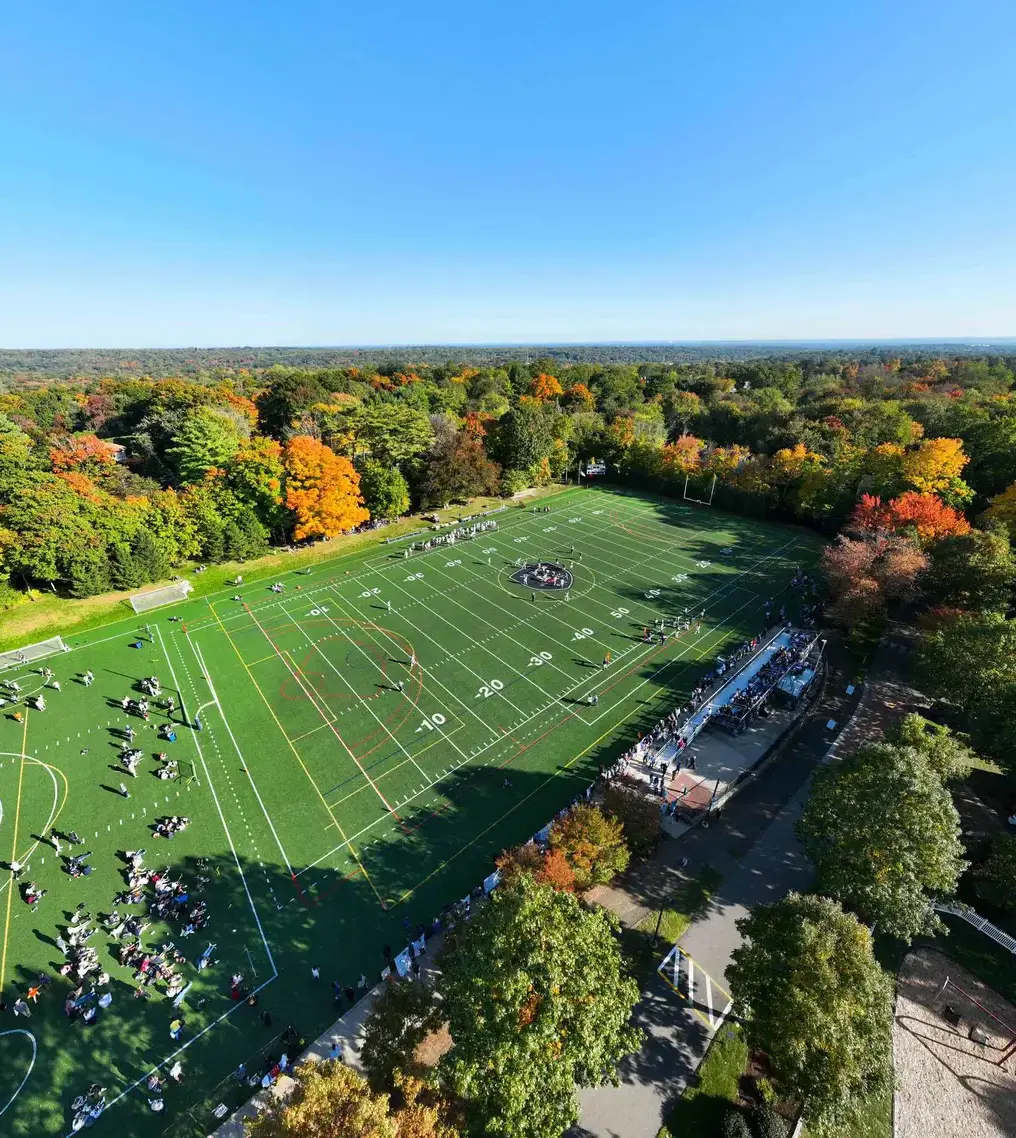How to Spark and Leverage Curiosity in Students
In Anatole France’s first novel, The Crime of Sylvestre Bonnard, an elderly scholar argues that "The whole art of teaching is only the art of awakening the natural curiosity of young minds for the purpose of satisfying it afterwards; and curiosity itself can be vivid and wholesome only in proportion as the mind is contented and happy.”
Interestingly, these sentiments still ring true today, which is why parents and teachers must know how to spark curiosity in students.
For parents who want their children to grow as learners and global citizens, it is important to understand the role that curiosity plays in personal development. This article, then, will describe three ways to inspire curiosity in students of all ages:
- Encourage students to ask the right questions
- Take time to tinker
- Embrace project-based learning
Why Should We Spark Curiosity in Students?
While children often enter the classroom with a sense of excitement, many parents and teachers wonder why that zest for learning can wane over time. According to the experts, real learning occurs only when an individual experiences the “joy of exploration — a hidden force that drives learning, critical thinking, and reasoning.” Furthermore, children express their curiosity whenever they encounter new ideas in a safe, encouraging environment. Thus, every stroll through the woods, every novel, every science project, or every performance becomes an opportunity to spark curiosity. Indeed, the goal of education is twofold:
- to create a lifelong love of learning, and
- to develop nobility of character.
Curiosity lies at the heart of both objectives; it motivates students so they persevere through setbacks and celebrate integrity, resourcefulness, and relationships.
Curious students want to know more; they understand that their aim exceeds a grade, class rank, or admission to a college of choice. Curious students realize that learning is a human endeavor that shapes an individual’s life, community, and culture.
How to Spark Curiosity in Students
Since children have a natural proclivity to inquiry, sparking curiosity can take many forms and include every academic enterprise. For instance, young children want to know why the sky is blue, whereas middle school students want to know how math enables them to write code and construct robots. By contrast, high school students want to understand the socioeconomic and ethical implications of unchecked climate change.
The key to unlocking a young person’s curiosity rests in listening and teaching the student to ask the right questions. Too often, teachers tell students what they “need to know,” assuming the students simply lack information. Instead, instructors should build on the students’ pre-existing knowledge, tailoring engaging, age-appropriate lessons that pique the students’ individual interests.
1. Encourage Students to Ask the Right Questions
Curiosity begins with questions, preparing today’s students to navigate an evolving culture. According to Dr. Jenny Brockis, an expert in the science of high-performance thinking, 21st-century leaders must possess self-awareness and curiosity, both of which lead to an appreciation of diverse thoughts and opinions. For students to develop curiosity in the classroom, students must have ample opportunities to explore their world. Instead of focusing on detached facts, students should look for connections between various disciplines. Then, they can start to formulate thoughtful questions about progression, the significance of a change, or cause and effect. In short, parents and teachers should encourage students of all ages to ask essential questions that begin with:
- “Why…?”
- “How…?”
- “What if…?”
By learning to ask the right questions, students expand their base of knowledge, heighten understanding, and find the confidence to take calculated risks. When young people learn to form clear, cogent questions, they move beyond fact gathering; they learn how to learn and how to think. As a result, they assess new information more thoroughly and retain it more consistently. As students hone these questioning skills, they become more courageous, nimble thinkers. In fact, researchers suggest that curiosity enables young people to welcome change; in other words, rather than reacting from fear or anxiety, curious students see change as an invitation to grow.
These same researchers also believe that curiosity results in “positive emotions, humor, playfulness, out-of-box thinking, and a noncritical attitude — all attributes associated with healthy social outcomes.” When students know how to ask the right questions, they begin to see possible solutions where problems currently exist.
At King School, we understand that a quality education involves the whole person. Students are not “vessels” for data storage; they are dynamic investigators whose curiosity can propel them to imagine, invent, and improve.
Accordingly, our teachers take the time to form healthy relationships with students, encouraging them to adopt a “growth mindset,” particularly when they encounter challenges. We draw from each student’s interests, learning patterns, and personal goals to spark their curiosity and create a stimulating educational experience.
Moreover, we rely on proven, project-based curricula that encourage collaboration, respect, active listening, and critical thinking. For instance, consider the way our approach to teaching and learning in the Lower School sparks curiosity in students:
- Our Readers and Writers Workshop trains students to ask discerning questions and express their opinions through informative, persuasive, or narrative writing. Additionally, students critique their own work and the work of peers with honesty and kindness. As a result, the children develop an ear for language, appreciating its power and beauty.
- Similarly, our STEM Program (Science, Technology, Engineering, Mathematics) includes the Makerspace, a Lower School Science Lab, and the Computer Science Media Center, where students learn to ask relevant questions and then to engage in hands-on work to solve problems.
Finally, our Lower School Social Studies Program introduces the idea of community, as students begin to ask questions regarding citizenship, responsibility, and the benefits of national, cultural, and religious diversity.
2. Take Time to Tinker
Sparking curiosity in students requires dedicated time so that young people can observe, experiment, discuss, and analyze data, making connections and looking for real-world applications. Tinkering, then, supports curiosity by providing mental “real estate” so students can develop emerging ideas.
Since young people enjoy tinkering, parents and teachers should present them with ample opportunities for trial-and-error activities and discovery. Whether playing with math manipulatives, sorting through objects they found on a walk, or testing out new technology, tinkering can lead to sustained, productive learning.
In fact, many engineers believe that “Tinkering is the first step in the experiential learning continuum.” Although tinkering may seem trivial, it can lead to highly focused thinking that stimulates the brain to create and problem solve.
Therefore, tinkering can spark a student’s curiosity and improve concentration. Moreover, researchers believe that curiosity results in “positive emotions, humor, playfulness, out-of-box thinking, and a noncritical attitude — all attributes associated with healthy social outcomes.”
At King School, students of all ages can tinker in the many campus hubs for discovering and creating, including the Innovation Lab, Makerspace, computer labs, science labs, recording studio, scene shop, and craft room. Additionally, students can ignite their curiosity in various clubs around the campus.
- For instance, in King’s early childhood program, PreKindergarten and Kindergarten students learn about their world through a Reggio Emilia-inspired program, which leverages a project-based approach to teaching and learning. We honor our youngest learners by encouraging them to play and collaborate as they explore their vibrant classroom spaces, thus sparking curiosity and a love of learning.
- Lower School students also enjoy an eight-day adventure through King’s Global Studies Program. The children choose a country to research and learn about its language, customs, and culture through student-initiated, hands-on activities. For instance, in 2019-2020, the students chose countries within Central and South America. The adventure, then, sparks creativity and courageous thinking, while building problem-solving skills and fostering a deeper understanding and inclusive perspective of our world. The program capstone is a Museum Night that showcases the students’ art, media, 3D models, and writing portfolios.
- Our Middle School students learn to tinker, create, and collaborate in Computer Science and Digital Applications. They also actively explore in King’s Innovation Lab, which provides tools, space, and guidance to nurture creativity. Thus, students apply real-time critical thinking to trial-and-error activities, learning to design solutions to real-world problems
- King’s Upper School students also benefit from the Innovation Lab, which features interdisciplinary courses; the students’ immersion in the Design and Innovation program prepares them to shape the cultural and economic landscape of the future. Students with an interest in science, technology, engineering, and/or mathematics can enroll in King’s ASPIRE course. These students gain valuable experience in the field of modern scientific research by working as interns at an R01-level research laboratory.
3. Embrace Project-Based Learning
To prepare students for 21st-century life, students must seek “eureka” moments in life. As a hardware engineer, Ramaprasad Raqhavan believes that curiosity leads the individual from “oh” to “aha” to “ha ha.” In other words, curiosity inspires the student to move from observation to revelation to exultation over a discovery.
Project-based learning, then, honors this process because it provides the necessary time to follow an idea to its natural — or surprising — conclusion. In many cases, project-based learning requires collaboration, which fosters trust, respect, and empathy, traits that every responsible citizen needs to cultivate.
Whether the student works alone or in a group, project-based learning garners greater results than traditional assignments. For one thing, projects require careful planning, organization, and execution to succeed. The curious student, therefore, will view the project as a chance to dive deeper into a topic, broadening knowledge and gaining experience.
At King, we are committed to project-based learning, whether a PreKindergarten child is encountering nature for the first time, or a senior is marking a milestone by presenting a capstone project.
For years, King has been equipping students with first-hand skills they need to conduct research, review literature, design and implement experiments, and evaluate data. Our emphasis on curiosity, inquiry, exploration, collaboration, and innovation points to cohesive project-based learning.
Why Choose King School?
If you want your child to become a curious, agile thinker, consider King School. Our inspiring, student-driven program sparks creativity and courageous thinking.
King School is an independent, co-educational day school, serving students from PreKindergarten through Grade 12. The school encompasses 34 acres, 1 mile from the Merritt in Fairfield County, Connecticut.
Next Steps
Our admission team is ready to answer your questions about academic excellence, athletics, service, or student life. How can we help foster the best future for your child?









